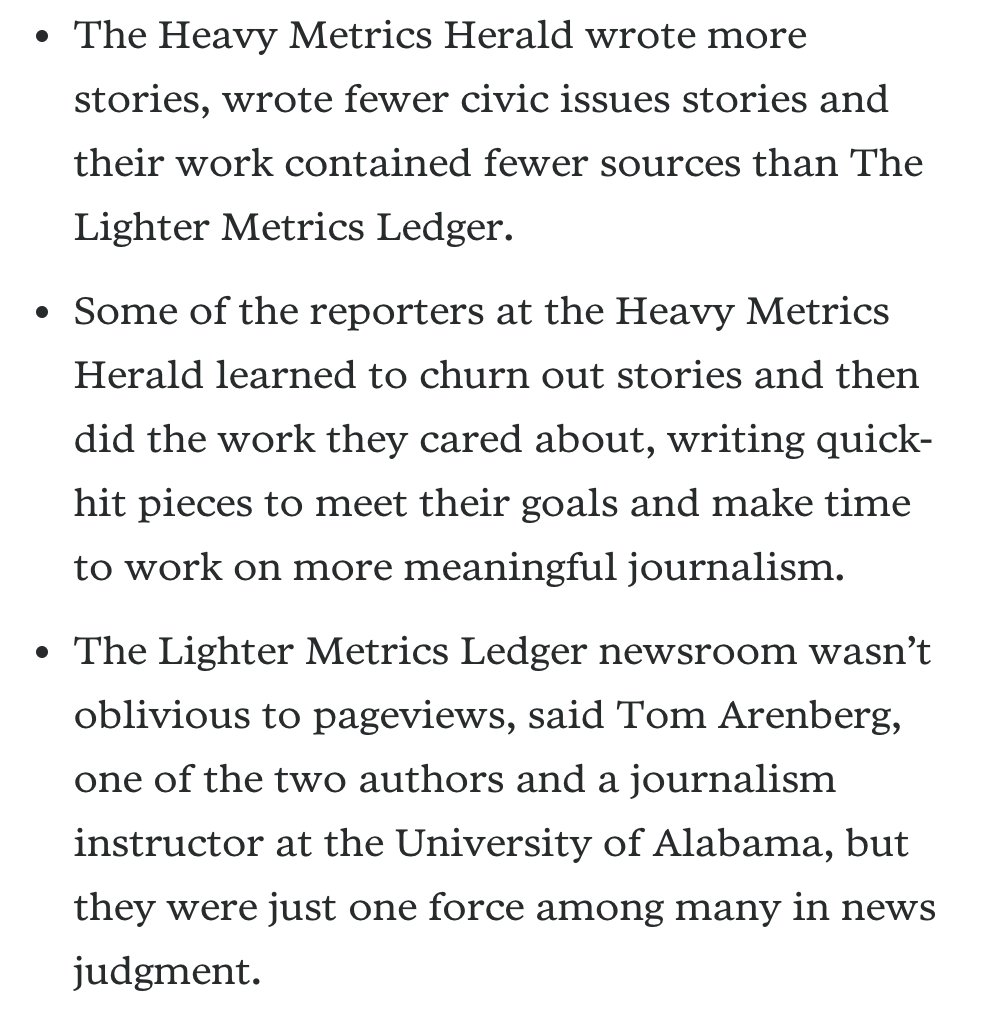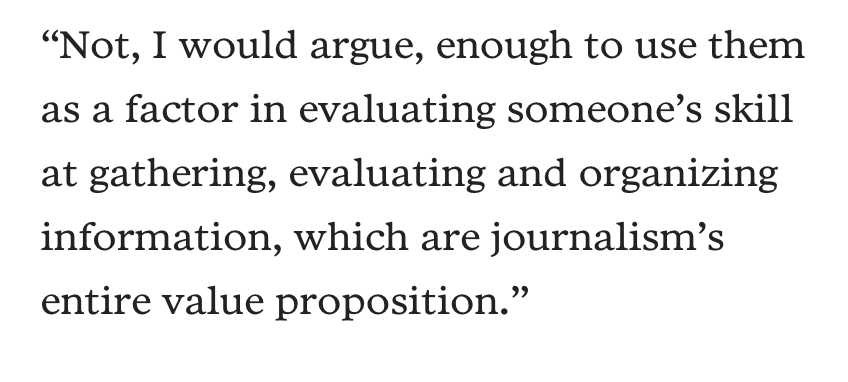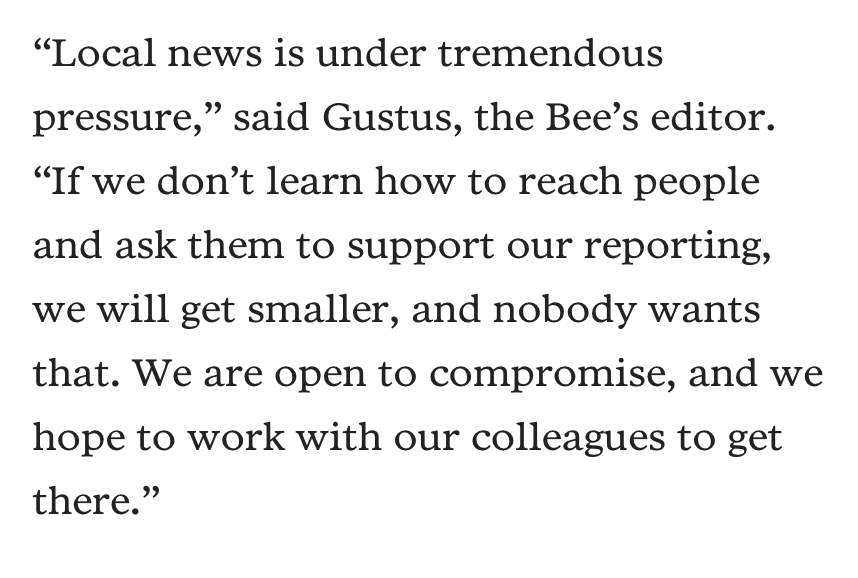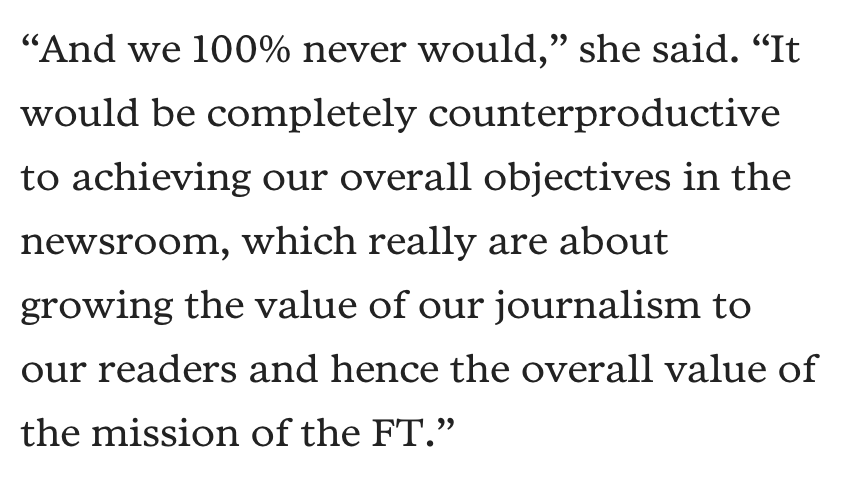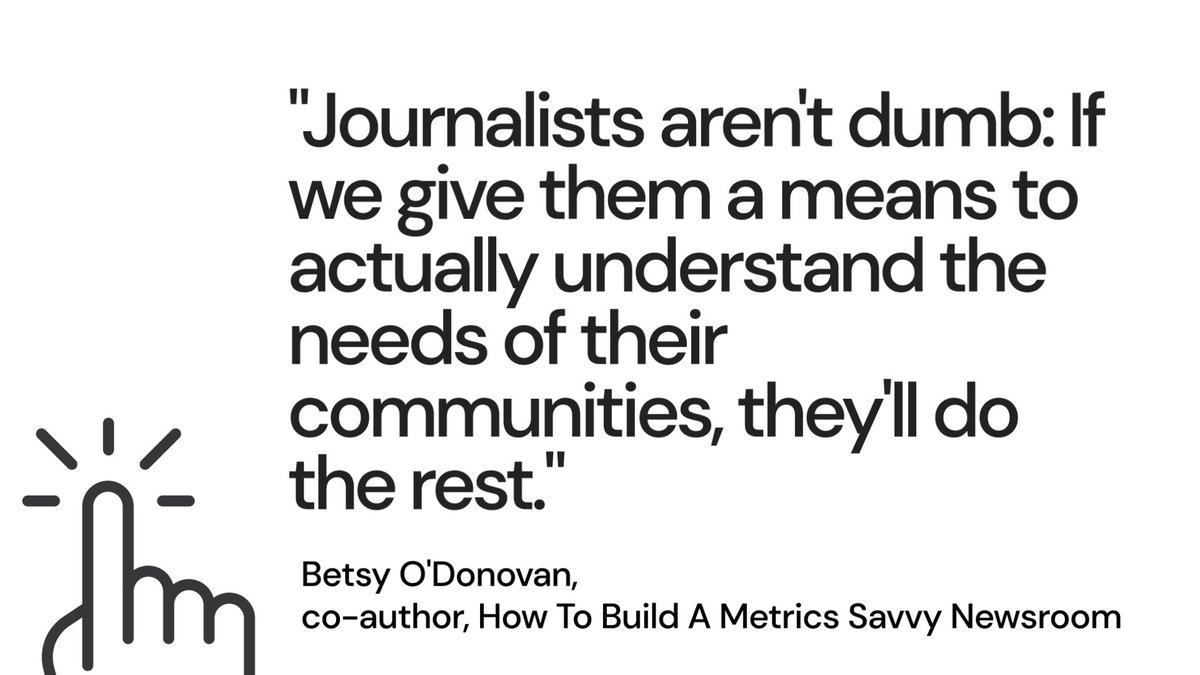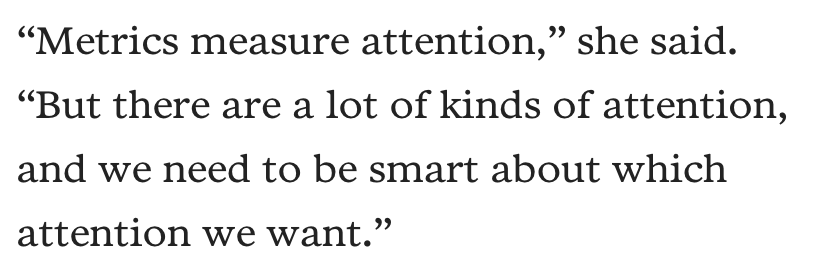The brewing battle between a local newsroom, its hedge fund owner and its guild hit Twitter last week and managed to hold its own against ... a lot of other news. It’s a story about metrics, but don’t let that stop you. https://www.poynter.org/locally/2020/the-sacramento-bee-wants-to-tie-metrics-to-pay-its-guild-is-not-having-it/">https://www.poynter.org/locally/2...
There was a lot of back and forth between @sacbee_news, @SacBeeGuild and @mcclatchy. Here& #39;s the short version: #NoPayForClicks doesn& #39;t capture the whole story. But the cause behind it is legitimate, and it gets at something newsrooms have been wrestling with for years.
I reached out to a few people to talk about why we& #39;re even talking about metrics, including @FT& #39;s @rkapkap. There’s a difference, she said, between being data-led and data-informed.
One study that shows this came from @TomArenberg and Wilson Lowery. They studied two newsrooms - one that had company-wide analytics goals and one that used analytics as one of many tools. The newsrooms were anonymized. The findings:
This battle is in part about a revenue strategy, and in part about what sets journalism apart from other internet content, said @ODitor. And metrics can only tell us so much.
Metrics are already a big focus at the Bee, said guild president @tclift. And the Bee has had one heck of a year. It reached 30k paying subscribers, launched an equity reporting lab, and hasn& #39;t had newsrooms layoffs, furloughs or pay cuts.
The guild and the newsroom will meet again after the election. Here& #39;s Bee editor @laurengustus:
If you read the stories journalists have shared on #NoPayForClick, you& #39;ll see it& #39;s a testament to why most journalists choose this work. Tough, important stories don& #39;t always include clear metrics wins.
> @rkapkap& #39;s comments were just about the FT. But here& #39;s what she said about tying metrics to pay - They don& #39;t do it.
Local newsrooms need the kind of sophisticated training and support to work with metrics in a way that produces great journalism and supports the newsroom& #39;s revenue goals. @ODitor mentioned two that are doing it well - @WhereByUs and @dallasnews.
I& #39;d add @seattletimes. Read @ctrejbal: https://www.seattletimes.com/opinion/if-reporters-focus-on-clicks-they-wont-focus-on-news/">https://www.seattletimes.com/opinion/i...
In covering local news for the last five years, I& #39;ve seen resistance to meaningless metrics give way to journalists feeling empowered to understand their audiences using more nuanced data. We& #39;re evidence-driven people, and data is one kind of evidence. @ODitor put it best.
I shared my own experiences with metrics with the people I talked to for this story. I started at Poynter playing the clicks game. I used to write a lot more each week. But when I started covering local news as a minibeat, data told us the audience was there for it.
As a longtime projects and features reporter, I was excited to see that people would spend real time, and come back, to in-depth work. It led @BenMullin to pitch me covering local full time as a grant-funded reporter. (Thank you for that @BenMullin. I couldn& #39;t be happier.)
I& #39;ve worked with great editors since then, including @barbara_allen_ and @itsren, and they support in-depth work. I don& #39;t write the highest trafficed stories for Poynter. But I do get some of the longest time spent and highest loyalty. And my newsletter has about a 30% open rate.
When I start to fret about clicks, @itsren shows me the value of loyalty, recirculation, time spent, and what they say about building a valuable audience. He also makes that case Thank you for that, @itsren.
So here& #39;s how I use metrics now. I keep an eye on the dashboard when I publish something, knowing that a ton of factors also matter - time, the news cycle, etc. I work really hard on headlines, which, it turns out, is how you sharpen the story itself.
I check in real time to see if there are places in my story where people are dropping off. Usually they& #39;re overly wordy spots, which I go in a prune a bit to make them easier. And then I get back to reporting. At the end of each month...
...I record metrics for all my work. What that shows me, each month, is that the stories that take time do better than the "exclusives" that are so hard to resist. Why? I think it& #39;s because those exclusives are about things that are going to happen, not things that are happening.
So now, I mostly say no to stories about things that are going to happen. With exceptions, of course, but I& #39;d rather follow-up in three months once there& #39;s something to cover, not just announce.
That means I can feel OK about saying no to exclusives (announcements) and focus on more in-depth work. And I have data to support that decision.
> @ODitor, again, put this perfectly.
Last thing. Twitter is THE WORST place for us to talk these things out. It flattens everything. This deserves nuance, just like the work of reporting, publishing & supporting the business of local news. I realize I am now tweeting. But maybe read this? https://www.poynter.org/locally/2020/the-sacramento-bee-wants-to-tie-metrics-to-pay-its-guild-is-not-having-it/">https://www.poynter.org/locally/2...
Then read Better News about how to build audiences https://betternews.org/topic/table-stake-targeted-audiences/">https://betternews.org/topic/tab...
And @ylichterman: https://www.lenfestinstitute.org/solution-set/ ">https://www.lenfestinstitute.org/solution-...
Follow whatever @AshleyAlvarado and @KPCC are doing.
Read everything from @mayerjoy. https://trustingnews.org/ ">https://trustingnews.org/">...

 Read on Twitter
Read on Twitter
